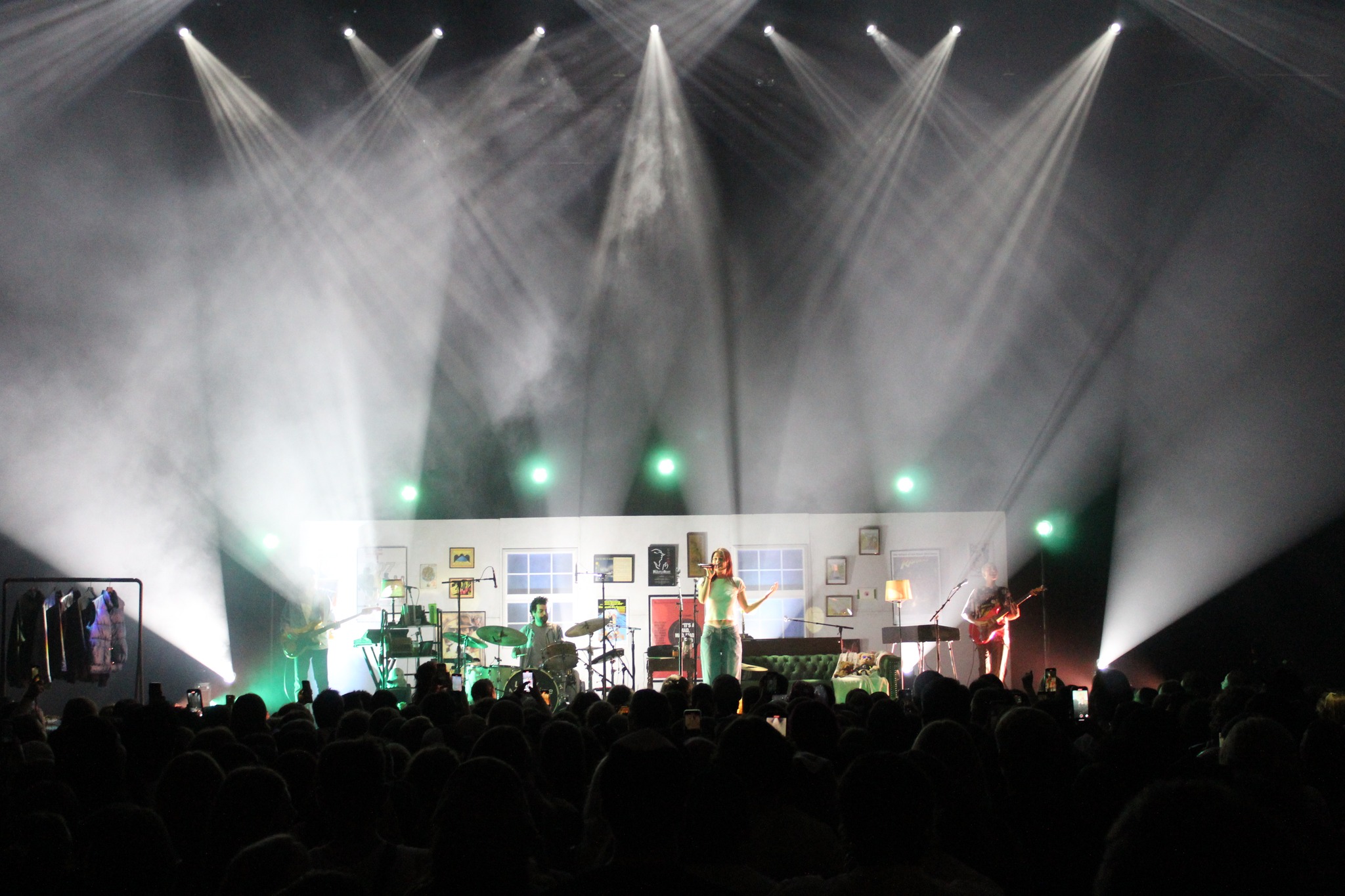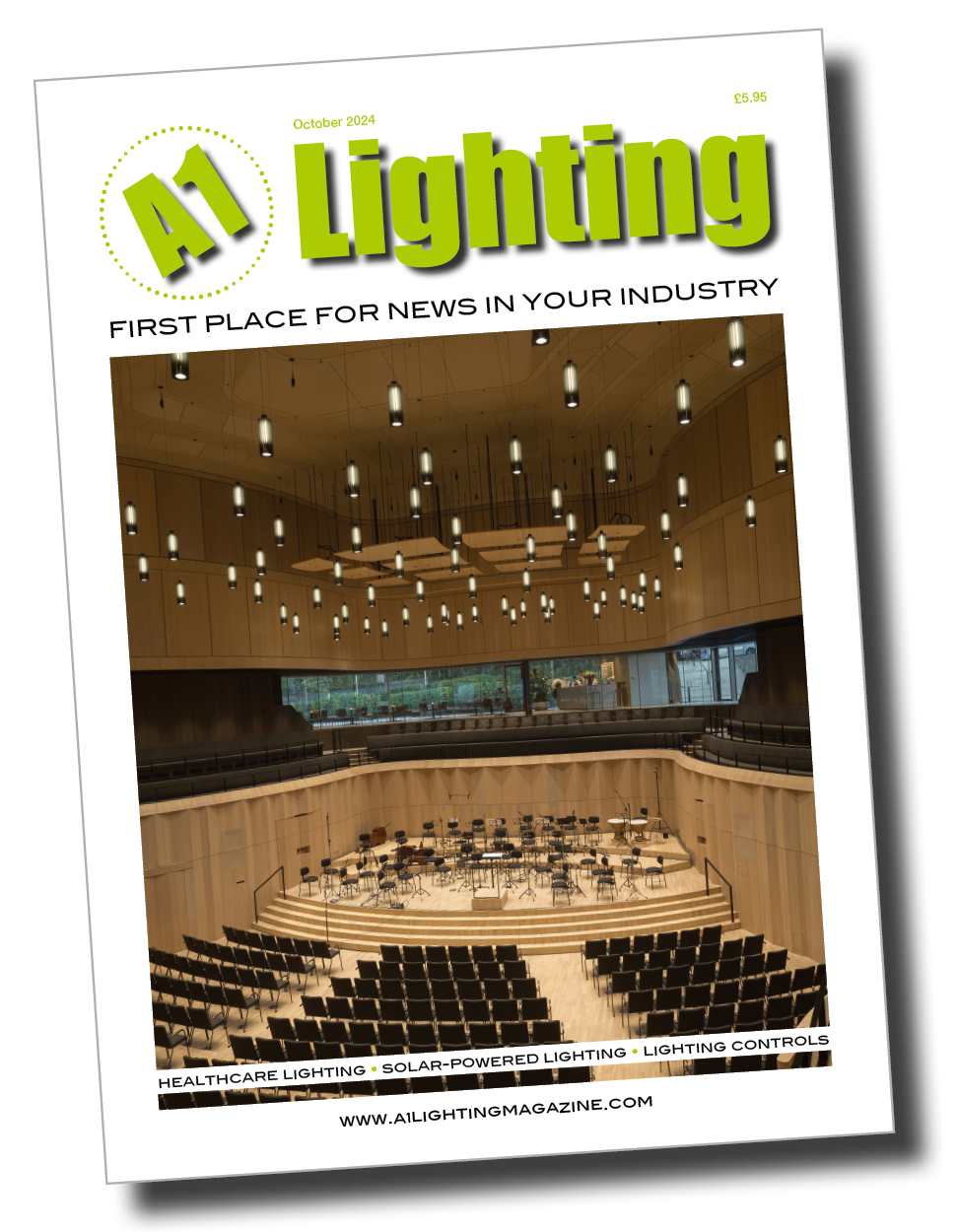
Every artist hopes to connect to fans by creating a sense of intimacy on stage that extends throughout the entire venue to embrace the audience. Rapidly rising folk and indie star Lizzy McAlpine does this with her music, which is built around her breathtakingly clear, velvety vocals and heartfelt lyrics. But she went a step further on her “The End of the Movie” tour by complementing her evocative sound with a deeply personal set that was designed around her actual living room space.
“All the items in the room were chosen by Lizzy, and were very specific to her inspiration and interests,” said Kat Borderud, the tour’s lighting and scenic designer. “The set contained her own personal clothing, family photos, books, and other cherished items.”
Borderud intensified the effect of this living room set by accentuating its various elements with light and shadows. “My role was to fulfil Lizzy’s vision and transform the stage,” she explained. “Darkness and shadow play are incorporated in this design for bringing the room to life as another character in Lizzy’s show. Shadows and light move and reflect on the walls from inside and outside the windows to move us through the set in a narrative form with the moods of the songs.”
“Both natural and electric lighting can change a lot within time and space of being in a room,” continued Borderud. “Half of our life is lived in dark spaces in the evening, or while we’re sleeping. A lot of art and music is created in very dark spaces and at night. The light and dark shifts illuminate the truth of duality throughout the set to represent the moods of Lizzy’s songs diving into themes of sadness and loneliness within the beauty of love.”
Helping Borderud and the tour’s lighting programmer Amy Melia create these moods on the 16-city tour were six CHAUVET Professional Maverick Force S Spot fixtures supplied by Squeek Lights.
In addition to producing a variety of captivating colors, the 350-watt fixture, played a critical role in adding depth and texture to the set with its gobos. “This fixture has an amazing selection of gobos,” said Borderud. “My idea initially had to do with pointing the lights in new directions and cultivating a new dimension on the rooms walls to reflect the feelings of Lizzy and her songs. The Force S spots manifested the song imagery coming to life, it was beautiful how it all worked out! Layered gobos, resembling glass shards in Lizzy’s sone “Broken Glass” and intense red stripe patterns for “Firearm” were two of my personal favorite song looks where we used this technique.”
The physical dimensions of the Maverick Force S Spot also contributed to the success of the design. Being relatively compact, the fixtures fit nicely behind the set pieces, but in front of the room’s wall. As a result, its beams could be used to create streams of light from behind the couch and through the clothing rack and shelves. From this position, the fixture was also relied on to backlight band members.
“For me, the Force S spots were essential for imitating feelings and moods for beautiful moments without drawing attention to the shape of the fixtures themselves,” said Borderud. “I first imagined using the lights as a representation of moonlight and sunlight streaming through the room. They also embody a car headlight glow at certain points, mirroring what is seen on Lizzy’s album cover artwork.”
Melia, who programmed and timecoded the show, arranged the spot fixtures around the backline each night. “They were the most asked about fixtures in our rig,” she said. “Every show, I would get house LDs saying ‘Hey, what do you think of those? Or ‘Man those really kick.’”
Given the nature of the living room set, special care had to be taken setting it up each show. “The posters that adorned the panels that made up the bedroom walls would go up and down every night,” said Melia. “This wasn’t a huge problem, but on certain stages that were more susceptible to vibrations, they would always put out a big test to the eye hooks and Velcro that held everything up.
“The set was also pure white, this on a truck and tracked by hands was a magnet for dirt- so, bless magic erasers and everyone,” continued Melia. “I was able to con venue crews into helping clean that wall. We also faced various climates from humid to dry on the tour, this presented an interesting outcome of the wood on the walls warping, by the end we all agreed flush was a relative concept. That being said, the wall was our biggest hurdle, and it was really not that bad, thanks to our great team and Mack (TM Extraordinaire) and Bob (PM/FOH sent from above) who always made sure I was supported and taken care of when it came to the load in/out and show process.”
Borderud agreed: “This show was the result of a team pulling together. It could not have happened without Amy’s hard work.”This effort paid off, not just for fans, but for the production crew itself, as the show delivered an array of memorable looks that they enjoyed being a part of. While Borderud loved the Force S spot look in “Broken Glass” and color gradients of “Erase Me,” Melia was struck by “An Ego Thing” with its green light imagery and “Over-the-Ocean Call,” during which McAlpine moves from sitting on a couch to the piano. It is, she says “a real living moment,” the kind you would expect to see in someone’s home – and the kind that makes for one intimate concert setting.













